On arrival at 123 Main Street for a confirmed stalled occupied elevator, you step off the rig and open and reach into the compartment that contains the elevator emergency management bag and a couple of other items. What’s in the bag and what are those couple of other items? Below, we will discuss items every elevator emergency management bag should contain, their suggested use, and a couple of other items you should have to handle the task at hand.
- A Close Call Encounter of the Elevator Kind
- Training Minutes: Poling and Elevator Rescue
- Training Minutes: Locating a Stalled Elevator
- Training Minutes: Spotting the Elevator
Elevator Bag Tools
The elevator bag should contain, at a minimum, the following:
- Standard wood door chocks.
- Elevator hoistway door saddle chocks (4 inches × ½ inch).
- Lockout/tagout (LOTO) kit.
- Spare set of LOTO kit keys.
- Firefighter’s service keys.
- Elevator hoistway door keys.
- Over-the-top (OTT) pick tools.
- Standard measuring tape.
- Assorted hand tools.
- Impact screwdriver.
- Can of lubricant.
- Laser measuring tool.
Now that we have a solid minimum list of equipment for the elevator bag, let’s discuss the intended use of these items.
Standard wood door chocks. Every firefighter carries door chocks in his pockets or on his helmet; also having them in the bag is definitely a bonus.
Elevator door saddle chocks. The elevator industry has designed the door wedge tool specifically for chocking open an elevator hoistway door; it retails at $45-$65. For an inexpensive alternative to the door wedge tool, cut scraps of ½-inch thick plywood into four-inch wood chocks. On all elevator door saddles, the track is a ½ inch wide (photos 1-4).
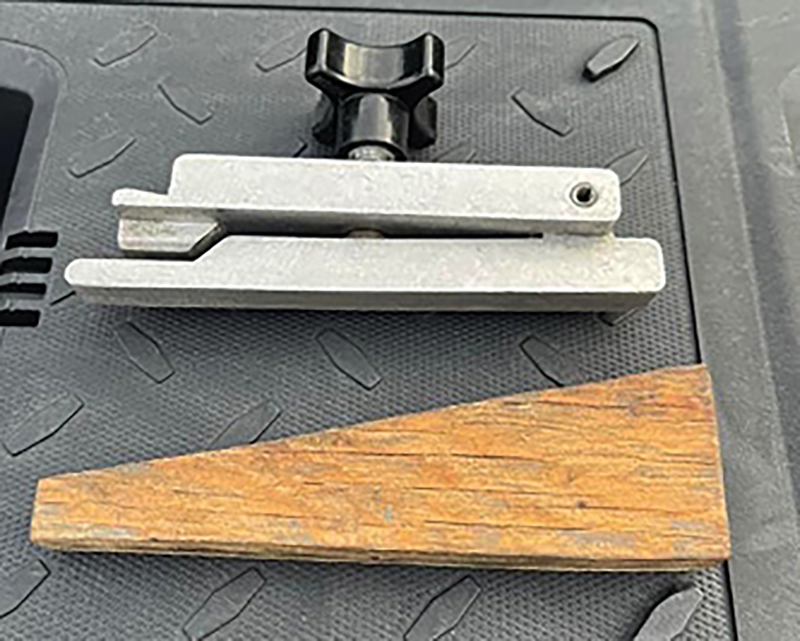
(1) Photos by author.
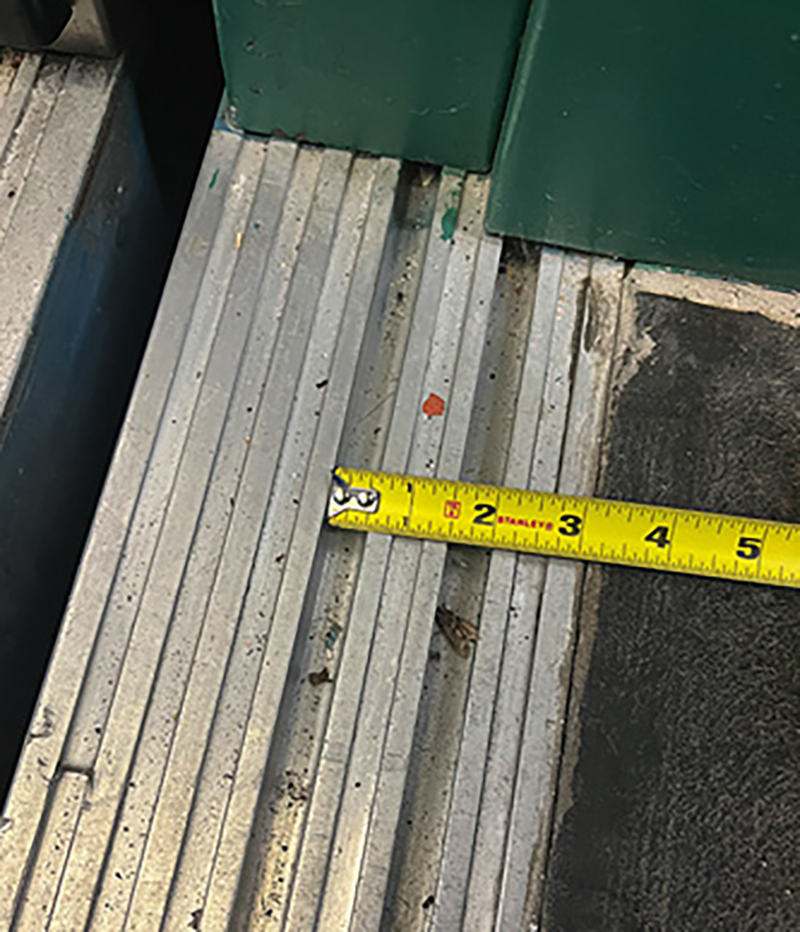
(2)
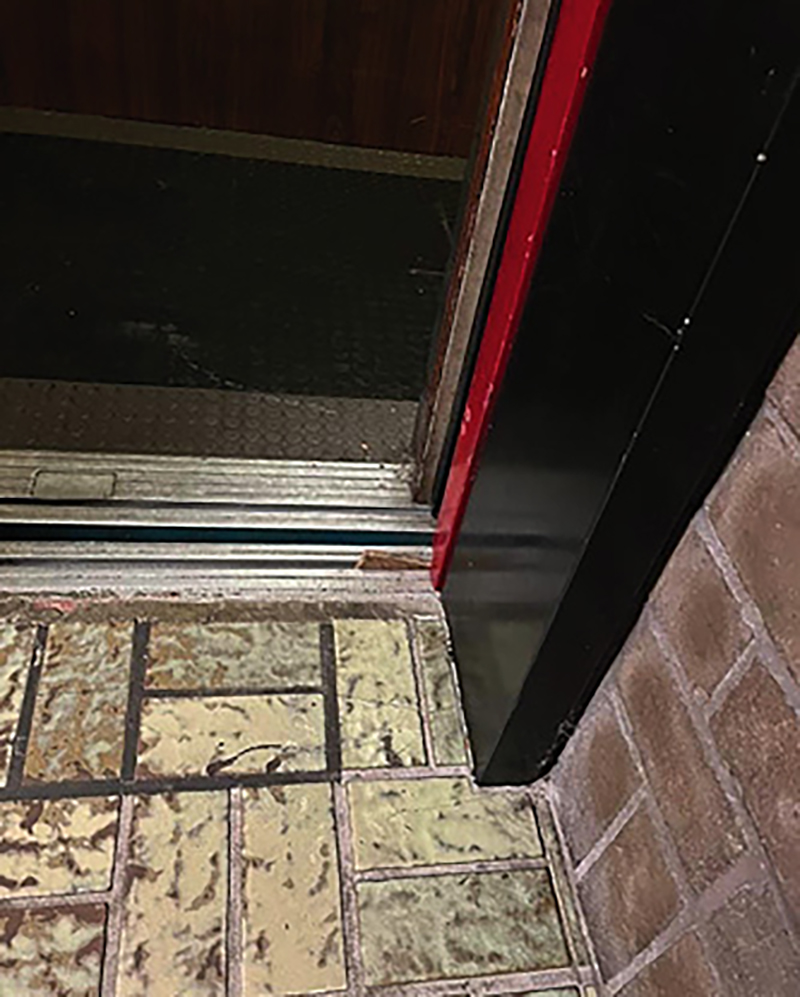
(3)

(4)
LOTO kit. Any time the mainline disconnect is turned off in the elevator machine room, I highly recommend that you place a lock and tag on the disconnect (photo 5). This will ensure that unauthorized personnel do not restore power. The only person authorized to remove the lock and tag on the mainline disconnect is the person who put it in place. Note that once the power is turned off, only the elevator mechanic is authorized to restore power to the mainline disconnect.

(5)
Some firefighters may think that it is inconvenient to go back and remove the lock and tag. Some elevator mechanics feel it’s an inconvenience as well because they don’t want to wait for the fire department to return. Here’s some food for thought: Is it safer to be inconvenienced for 10 minutes to remove the lock and tag for the elevator mechanic or to perform a two-hour, top hatch removal at 2 a.m. because someone turned the power back on after you left the first time? Only this time, there’s 12 intoxicated college students trapped inside.
Spare LOTO kit key set. If your municipality or district has security boxes (photo 6) outside of your commercial structures and multiple dwellings, I highly recommend stowing the key for the lock placed on the mainline disconnect inside the security box. If the building doesn’t have a security box, you need an alternate plan. Losing the key and consequently the lock is costly. My department has learned this the hard way! My suggestion is to keep a spare set of LOTO keys in the bag.
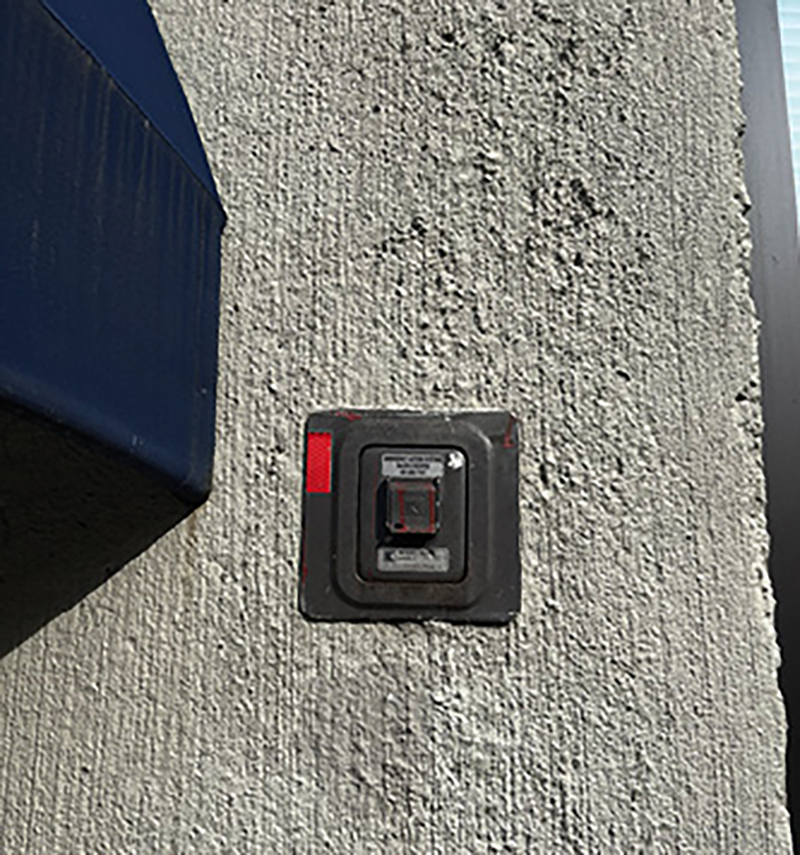
(6)
Firefighter’s service keys. If your municipality is fortunate to have one standardized firefighter’s service key, you won’t be adding much weight to the elevator emergency management bag. Unfortunately, your town may have numerous styles of these keys. If you are not sure how many different keys are in your first-due district, I highly recommend carrying a complete set. You can easily find a complete set of firefighter’s service keys online.
Elevator hoistway door keys. There are many styles of hoistway door keys. The most common type is the Otis double-leaf drop key (photo 7).

(7)
Another common hoistway door key is the Schindler lunar key (photo 8).

(8)
The GAL single-leaf drop key (photo 9) is specifically used with the GAL door lock (photo 10).

(9)
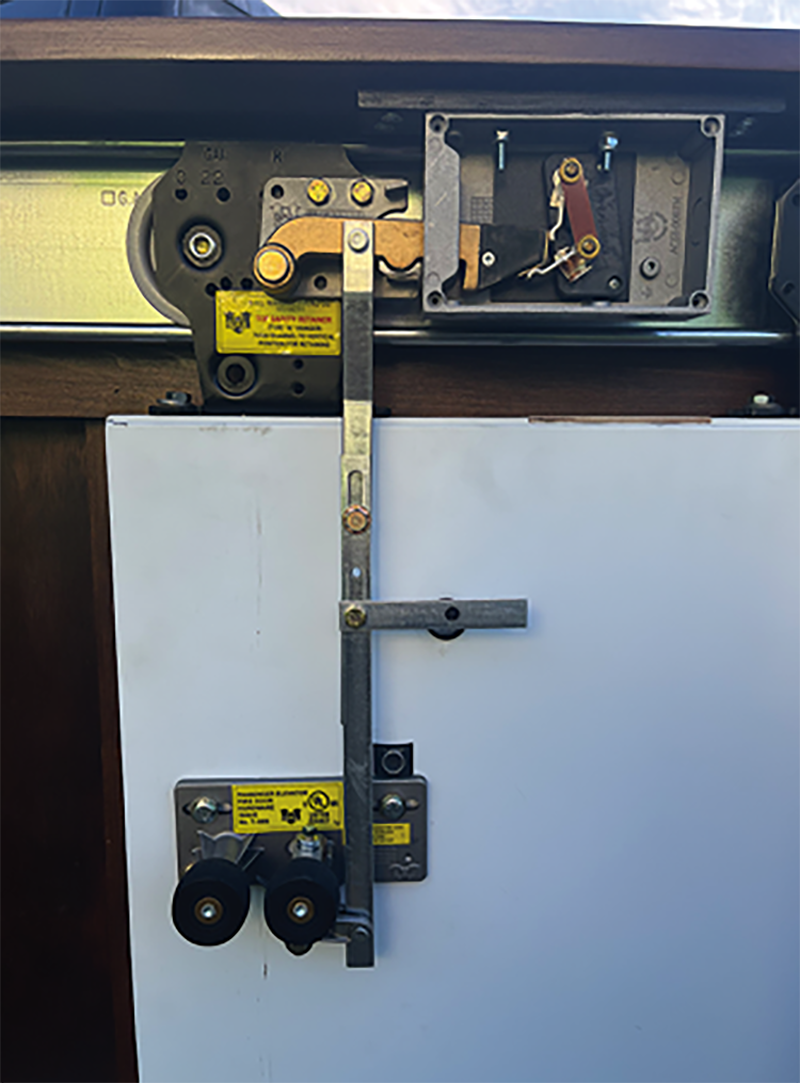
(10)
It is a wider drop key than the Otis key (photo 11).
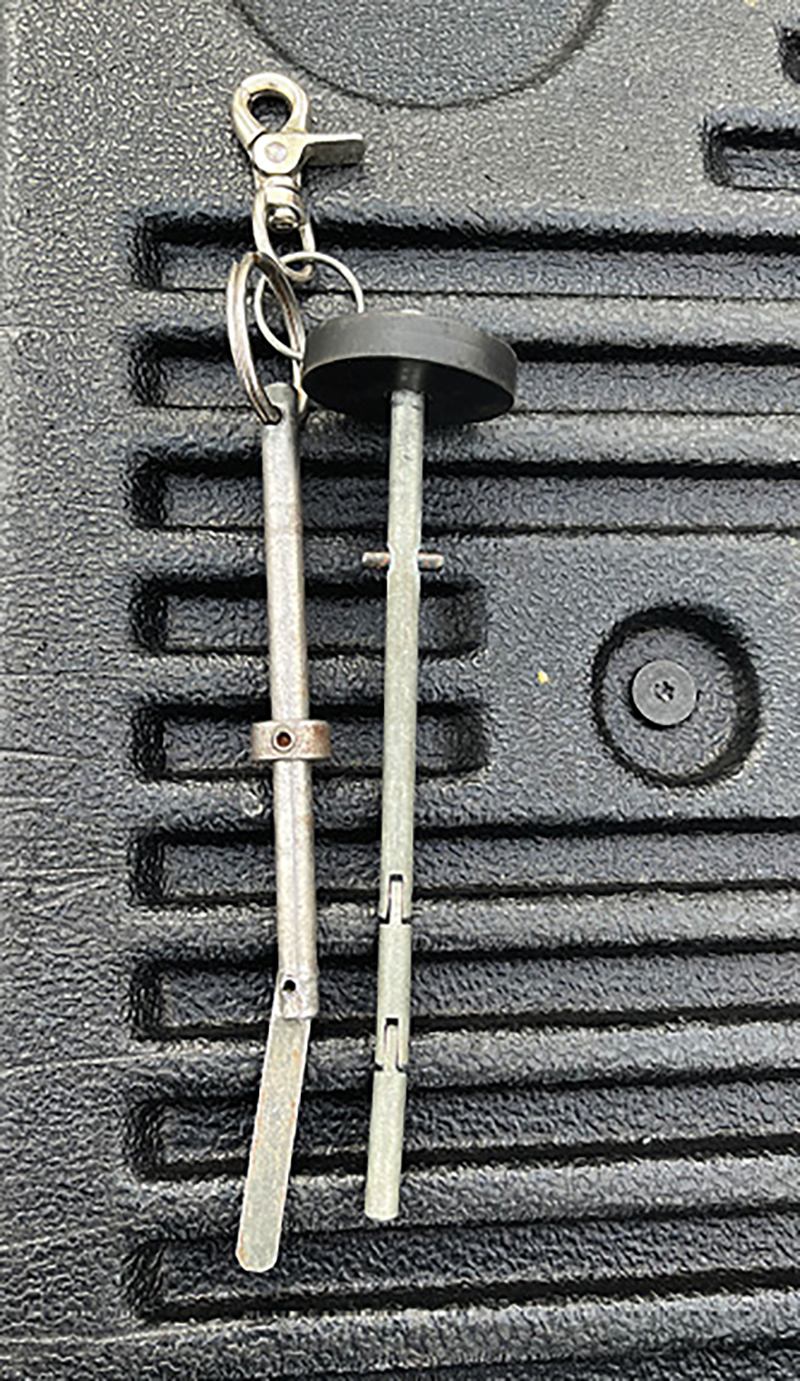
(11)
The GAL drop key will not fit through the hole of the Otis door lock, but the Otis key will fit through the hole of the GAL door lock. If you want to carry your own elevator keys in your pocket, I recommend carrying an Otis double-leaf and a Schindler lunar key (photos 7-8). This will cover 90% of the hoistway doors you will encounter. Your department can purchase elevator hoistway door keys on the Internet. For instruction on the proper and safe use of elevator hoistway keys, look up my Fire Engineering’s Training Minutes video “Options for Elevator Operations,” https://bit.ly/3l2XSL6.
Over-the-top (OTT) pick tools. Firefighters at some point will encounter an elevator hoistway door that has no key access or a broken door lock, making key access impossible. You must have a backup plan to open the hoistway door, especially in an emergency situation. An emergency includes a fire in the building, a medical emergency, or a panic situation. These conditions are stated in the American Society of Mechanical Engineers (ASME) A17.4 2015, Guide for Emergency Personnel, document for first responders. A memory aid for determining if an emergency exists is FIIP (fire, injury, illness, panic).
Photo 12 shows a complete set of eight OTT picks that will work on most hoistway doors. Hoistway doors with a gap at the top edge allow the pick to slip over the top and under the door lock (photo 13). You can review this in the Fire Engineering Training Minutes video “Options for Elevator Operations.”
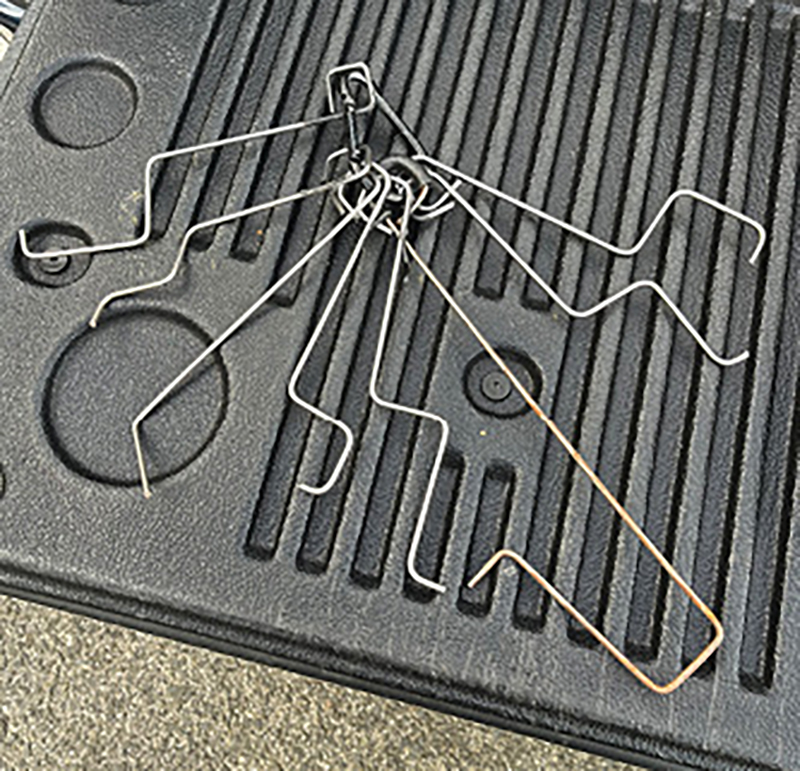
(12)
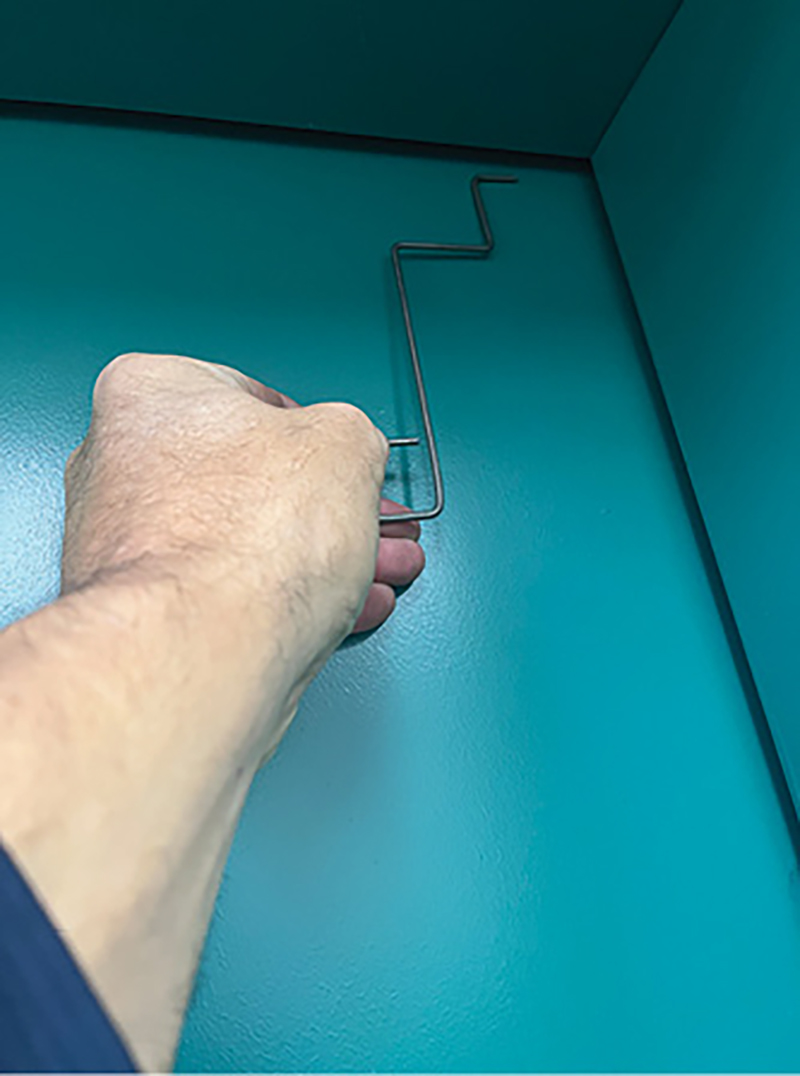
(13)
Standard measuring tape. I use a standard measuring tape to get an accurate placement of the OTT picks. The door lock will be in the same exact location on every floor. It’s an exact measurement and the tape measure will put you right on it! (photo 14).

(14)
Assorted hand tools. At some point during a stalled occupied elevator operation, the firefighter/first responder may need hand tools to assist him with opening parts to the elevator that are meant to be opened by hand only. The top access hatch (photo 15) is the best example that I can give where tools may be necessary to open it. A top hatch removal is always the last resort for passenger removal but may be the only option left when an emergency exists (FIIP). The top access hatch is required to be locked from the outside and is usually fastened by wing nuts, thumb screws, slide bolts, or a door lock (photo 16). The ASME code states that the fasteners must be removable by hand only. In my experience, this is not always the case; the elevator mechanic may have replaced these hand fasteners with hardware, requiring hand tools to open. The following is a short list of small hand tools I recommend for the elevator bag:

(15)
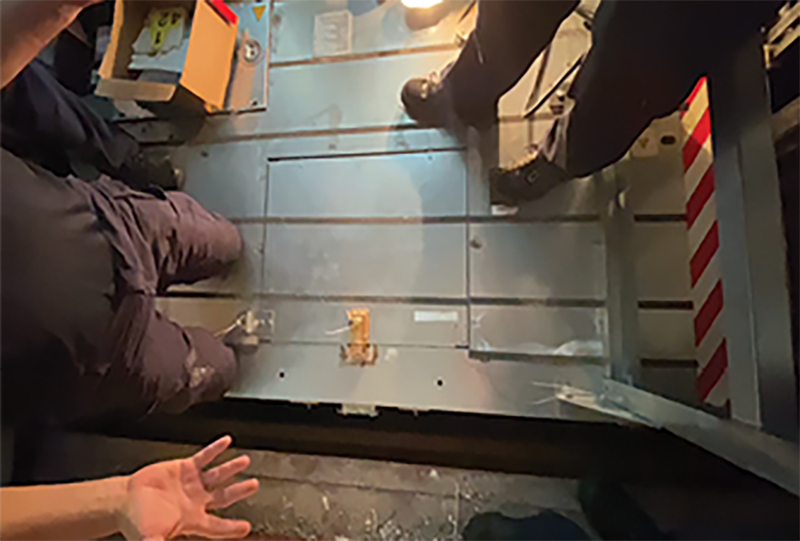
(16)
- Flathead screwdriver.
- Philips head screwdriver.
- Slip-joint pliers.
- Adjustable wrench.
- Locking pliers.
- Allen key set (metric and standard).
Impact screwdriver and a can of lubricant. If you have escalators in your first-due district, you may be called to an escalator entrapment (photo 17). This type of emergency MUST be treated as a machinery rescue. The first thing to do at an escalator entrapment is to secure the power to the escalator. The power is located below the top floor plate of the unit (photo 18). Sometimes, the floor plate is fastened by screws that will be filled with dirt and possibly seized (photo 19). Some lubricant and an impact screwdriver will usually do the trick to free the seized bolts.
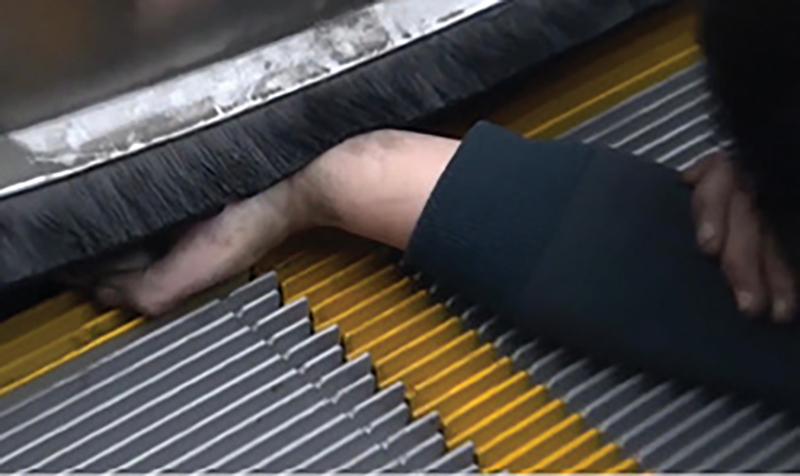
(17)
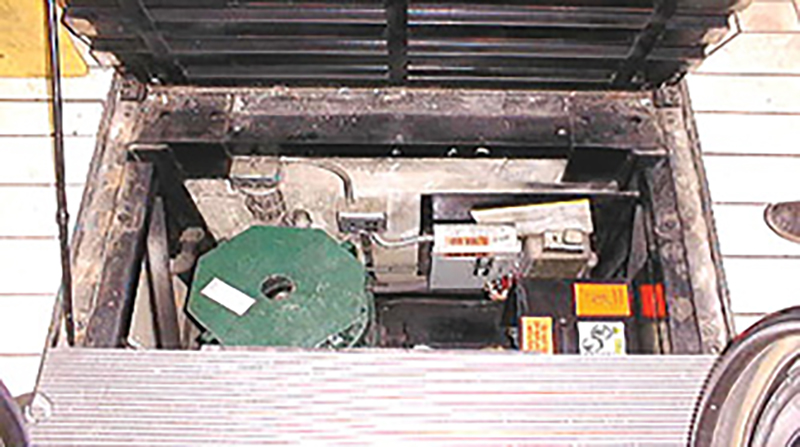
(18)

(19)
Laser measuring tool. The laser measuring tool is one of the safest options for spotting the stalled elevator’s location in the elevator shaft. Once the power is secured to the stalled elevator and confirmed by the elevator motor room team, just open the elevator hoistway door enough to stick the laser through the opening (photo 20). Point the laser at the bottom of the elevator and press the button. Read the screen and that will give you the elevator’s location in feet/meters (photo 21). For example, if the measurement reads 230 feet/70.1 meters, the bottom of the elevator is approximately at the 23rd floor.
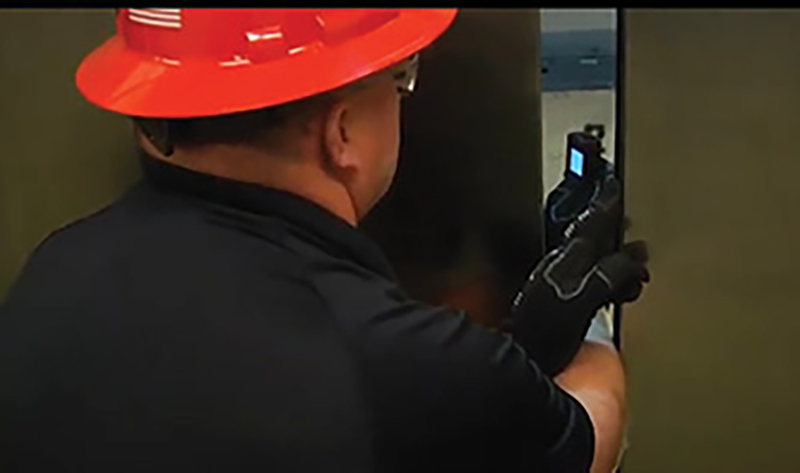
(20)

(21)
You can also use the laser measuring tool from the overhead machine room. Pointing the laser measuring tool down the hole where the cables pass through (the rope chute) will give you the same result but to the top of the elevator (photo 22). See Fire Engineering’s Training Minutes video “Spotting the Elevator,” https://bit.ly/3WXLWrq.

(22)
Additional Items
Poling tool. A poling tool is a must-have item; poling has been used at stalled occupied elevator responses for many years. It’s a way to pick the hoistway door lock when a keyhole is not present, usually from an adjacent running elevator (photo 23). I designed the Dragon Tool when broom handles, hockey sticks, golf clubs, and other substitutes weren’t doing the job (photo 24). The Dragon Tool weighs five pounds, fits through the tight gap between the hoistway and the car door, and extends to 13.5 feet. The flashlight attached to the hook end allows the user to put the tool directly on the door lock in the dark elevator shaft (photo 25). You can also see the Dragon Tool in action in Fire Engineering’s Training Minutes “Poling & Elevator Rescue,” https://bit.ly/3Hy53T4.
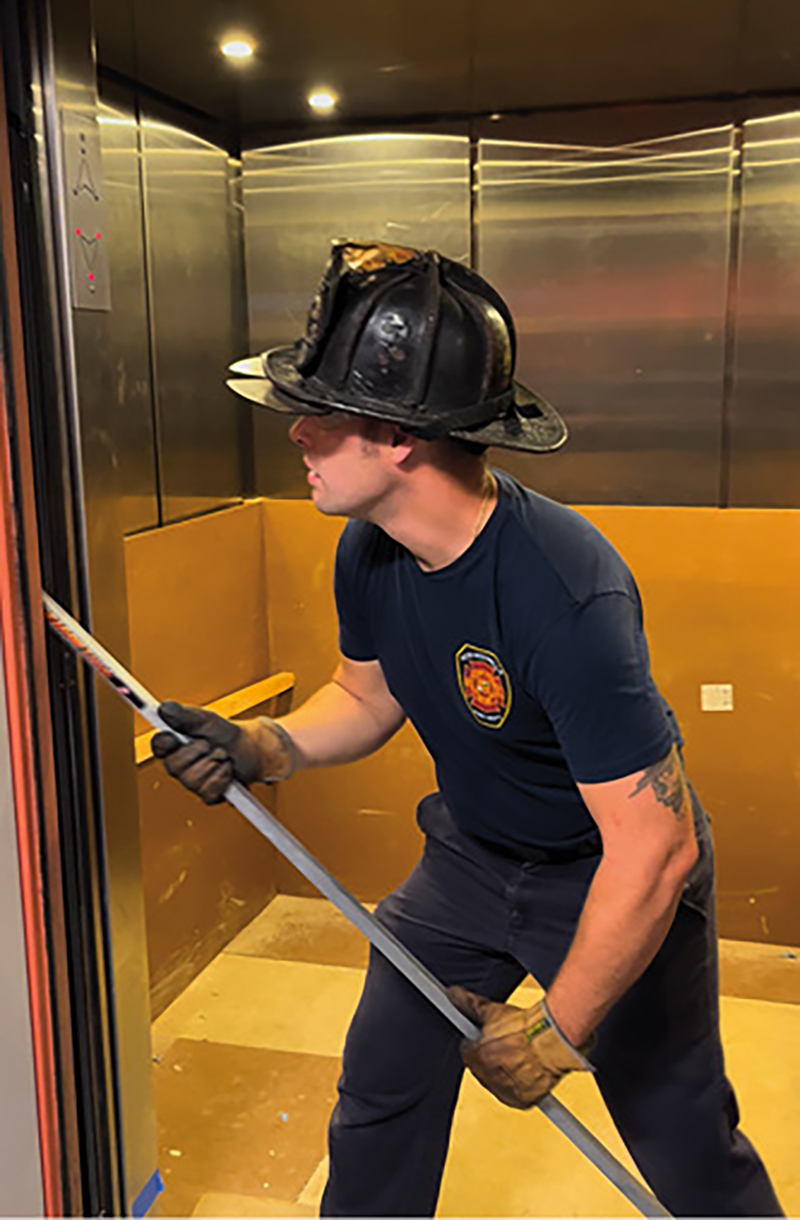
(23)
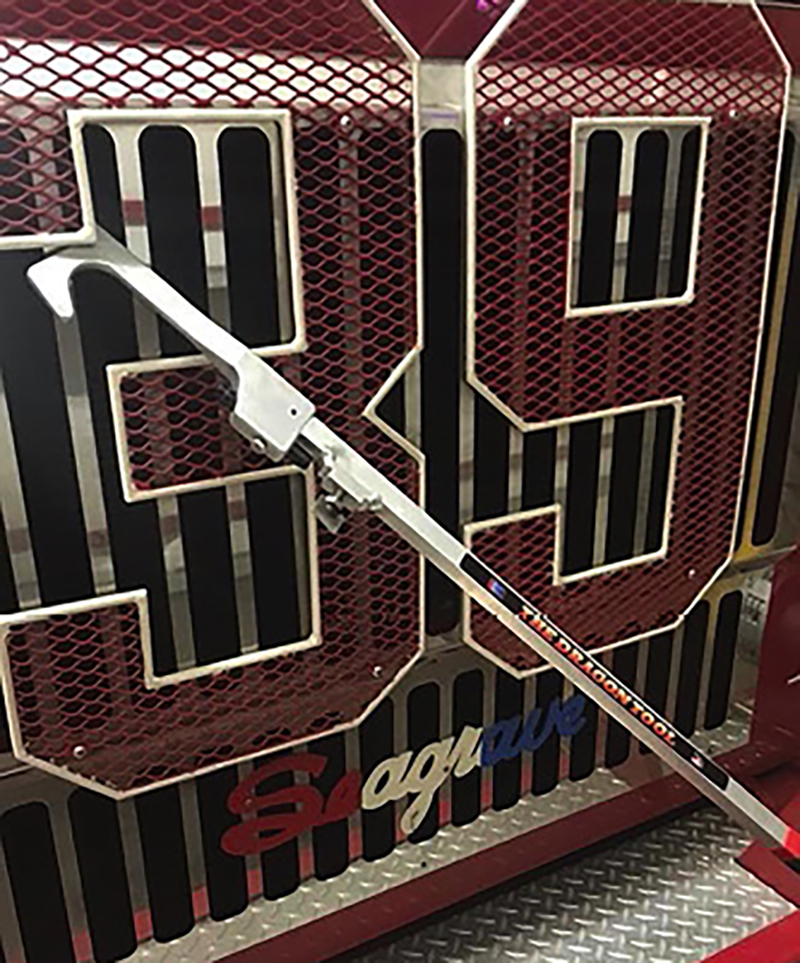
(24)
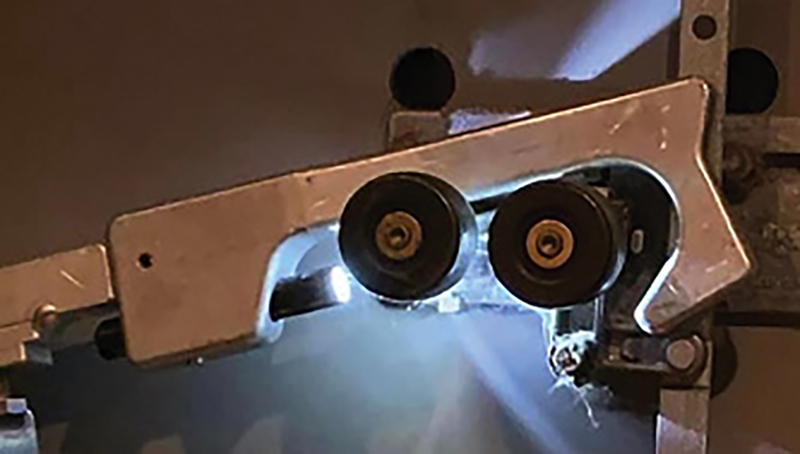
(25)
The Ward/trombone and modified Ward/trombone tool. Use these hoistway door pick tools when the only option is to go around the leading or back edge of the hoistway door (photo 26-27). Newer style hoistway doors do not have a space at the top of the door to accommodate the OTT pick set. This is a great alternative. The original tool was invented by retired Fire Department of New York Firefighter Warren Ward (Ladder 108, Williamsburg section of Brooklyn). You can also see the Ward/trombone tool in action in Fire Engineering’s Training Minutes “Options for Elevator Operations,” https://bit.ly/3l2XSL6.

(26)
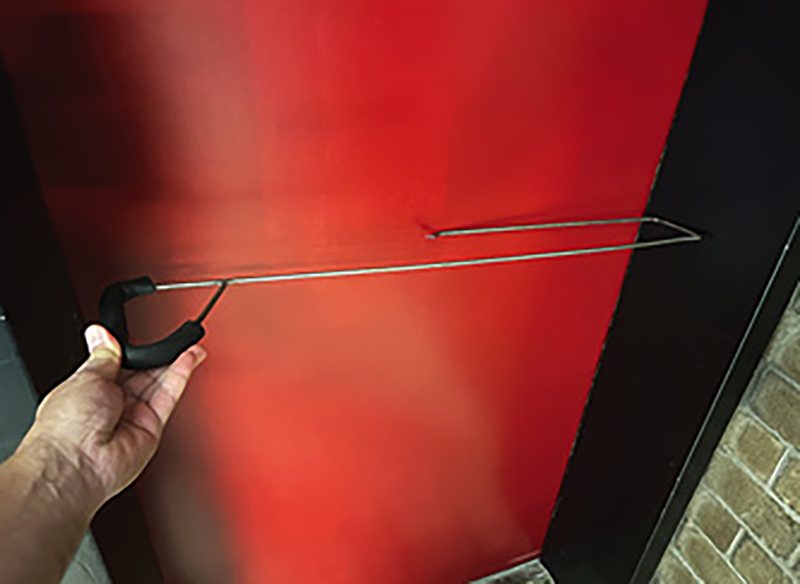
(27)
This article is intended to set up the firefighter/first responder for success at an elevator response. Having the right tools for the right job is a must. If you carry a dedicated elevator rescue tool bag and the other items mentioned above (photo 28), you will be able to handle most situations. There are plenty of tools on the “big red” rolling toolbox that we can add to any situation.
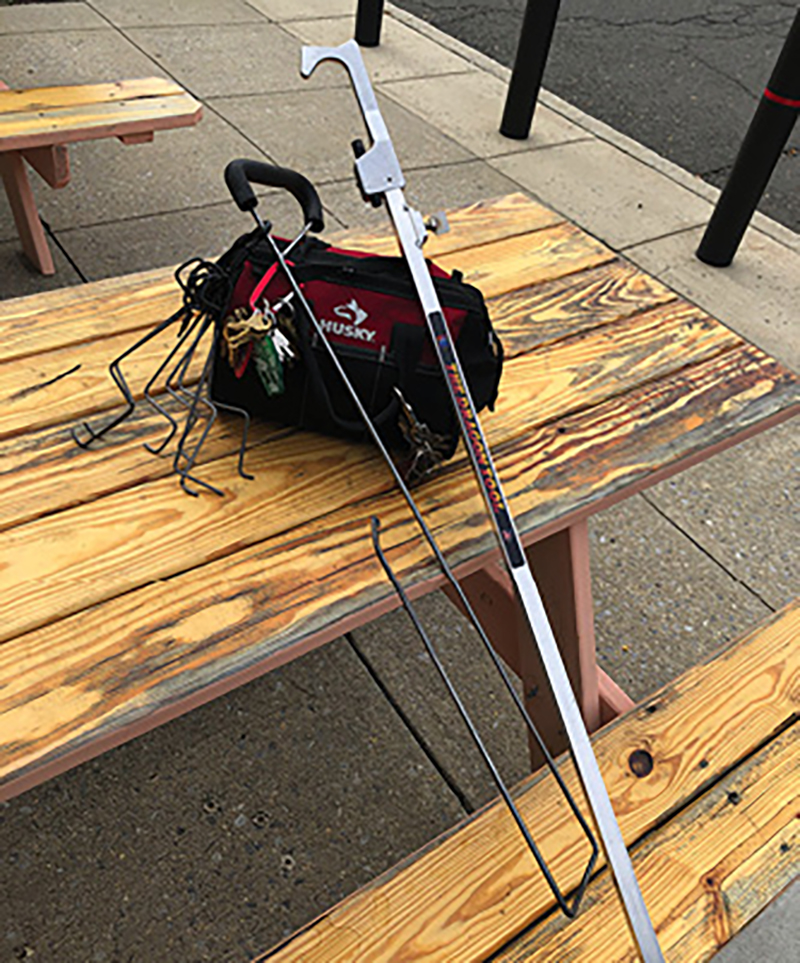
(28)
MICHAEL A. DRAGONETTI retired after 28 years of service to the Stamford (CT) Fire Department, 20 of those years assigned to Rescue Company 1. He presents “Elevator Emergency Management,” a training program to prepare firefighters/first responders to handle stalled occupied elevators safely. Dragonetti is a H.O.T. instructor at FDIC International and a contributor to Fire Engineering and its Training Minutes video series.

